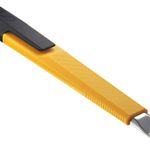
Several years ago I contributed to an article, along with Tage Frid, that argued the merits of cutting pins or tails first (“Cutting Through Dovetails,” available online to members of FineWoodworking.com). Frid preferred pins first; I’m a tails-first guy. But ultimately, as I tell my students, it matters little which part you cut first because once the joint goes together, no one can tell the difference. Over the years I’ve been building furniture, I’ve cut thousands of dovetail joints by hand, and during that time I’ve developed a number of tricks to make the job faster and easier. Here is one of my favorites.
One of the reasons I think it’s more efficient to cut the tails first is that you need to lay out the dovetails on only one piece, then use those marks to cut the tails on two pieces at the same time. And when you transfer those longer layout lines across the end grain of two workpieces and use the lines to sight your saw, you get a more accurate cut. Also, when you cut two pieces at the same time, such as two drawer sides, the resulting joints match visually. So whether you are cutting case parts or drawer sides, lay out the tails, clamp the two workpieces together, and save yourself some time.
For more on how Christian Becksvoort cuts dovetails, become a member of FineWoodworking.com to read his article “My Favorite Dovetail Tricks.”
Photos: William Duckworth
From Fine Woodworking #171, p. 51
To check out other tips for dovetails, see
- How to Cut Perfect Dovetails with Tape
- Hand Dovetails: They’re really not that hard to do
- Better Way to Attach Tabletops: Dovetail cleat is strong and stylish
- Resharpen, Restore a Dovetail Saw
Fine Woodworking Recommended Products

Olfa Knife

Leigh D4R Pro

Veritas Precision Square
























Log in or create an account to post a comment.
Sign up Log in